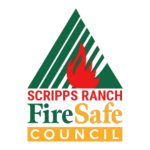Fire Safety Services: Your Ultimate Guide to Protection and Prevention
In the realm of safety and security, understanding and implementing effective fire safety services is non-negotiable. Whether you’re safeguarding your home, business, or public institution, the knowledge and application of fire safety protocols can literally mean the difference between safety and catastrophe. Let’s dive into what fire safety services entail, their importance, and how they can be a lifeline in times of emergency.
Understanding Fire Safety Services
At its core, fire safety services encompass a broad range of practices designed to prevent the outbreak of fire, minimize damage during fire incidents, and ensure a safe and effective response. These services are multifaceted, including but not limited to fire risk assessments, installation and maintenance of fire detection and suppression systems, fire safety training, and emergency planning.
The Pillars of Fire Safety
- Prevention: Identifying and mitigating fire hazards.
- Protection: Implementing systems and measures to protect against fire.
- Preparedness: Preparing individuals and organizations to deal with fire emergencies efficiently.
Why Fire Safety Services are Non-Negotiable
The importance of fire safety services cannot be overstated. Fires can cause devastating loss of life, severe injuries, and significant property damage. Moreover, the aftermath of a fire incident can lead to business interruptions, loss of income, and psychological trauma. Fire safety services are not just about compliance with legal requirements; they are about safeguarding lives, properties, and the continuity of businesses and services.
Key Components of Fire Safety Services
- Risk Assessments: The foundation of any fire safety strategy is a thorough risk assessment. This involves identifying potential fire hazards, evaluating the risk of fire, and implementing measures to mitigate these risks.
- Detection and Alarm Systems: Early detection of fire is crucial. Fire safety services include the installation and maintenance of smoke detectors, heat sensors, and fire alarm systems.
- Suppression Systems: From traditional sprinkler systems to advanced fire suppression technologies, these systems play a critical role in controlling and extinguishing fires.
- Training and Awareness: Educating employees, residents, or the public about fire safety, emergency procedures, and the correct use of fire safety equipment is fundamental.
- Emergency and Evacuation Planning: Having a well-designed emergency plan and practicing regular fire drills ensures preparedness for a fire emergency.
Choosing the Right Fire Safety Services Provider
Selecting a reliable fire safety services provider is critical. Look for companies with a proven track record, comprehensive service offerings, and a commitment to staying abreast of the latest in fire safety technology and regulations. The right provider should not only offer installation and maintenance services but also comprehensive risk assessments, training, and support in emergency planning.
FAQs on Fire Safety Services
What are fire safety services?
Fire safety services encompass a range of measures and practices aimed at preventing fire incidents, minimizing damage in case of a fire, and ensuring a safe and effective response to fire emergencies.
Why are fire safety services critical?
They are crucial for protecting lives and property and ensuring the continuity of business operations. Adequate fire safety services can prevent fire incidents, save lives, and minimize damage and financial loss.
What does a fire risk assessment involve?
A fire risk assessment identifies potential fire hazards, evaluates the risk of a fire breaking out, and recommends measures to mitigate these risks. It is the first step in any comprehensive fire safety strategy.
How do I choose a fire safety services provider?
Select a provider with a strong track record, a wide range of services, and a commitment to compliance with the latest fire safety standards and regulations. Ensure they offer comprehensive risk assessments, system installations, maintenance, and training.
Implementing Fire Safety Services: A Practical Approach
Implementing effective fire safety measures requires a holistic approach. Start with a comprehensive risk assessment to identify potential hazards. Based on the findings, implement the necessary safety measures, including installing detection and alarm systems and suppression systems and ensuring accessible and clearly marked evacuation routes. Regularly review and update your fire safety protocols to ensure they remain effective and compliant with the latest standards.
Training and awareness are equally important. Regular training sessions and drills should be conducted to ensure everyone is prepared to respond effectively in the event of a fire. Remember, the goal is not just to comply with regulations but to create a safe environment for everyone.
Conclusion
Fire safety services are an indispensable part of maintaining a safe living and working environment. They not only help in preventing fire incidents but also play a crucial role in ensuring that, in the event of a fire, the impact on lives and property is minimized. By understanding the components of fire safety services and implementing them effectively, you can protect yourself, your property, and your community from the devastating effects of fire. Remember, when it comes to fire safety, complacency is not an option. Stay informed, stay prepared, and ensure that your fire safety measures are always up to the mark.
